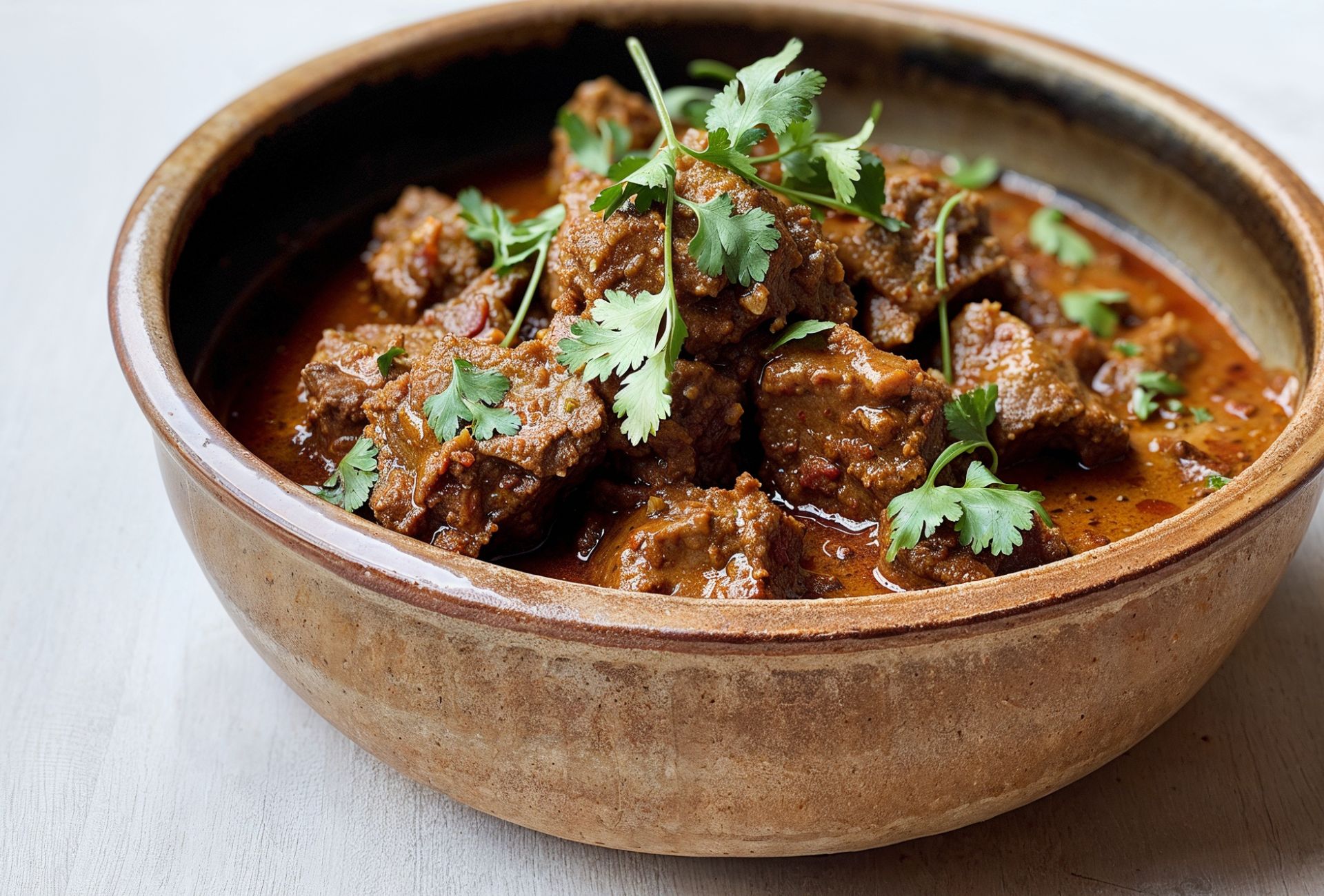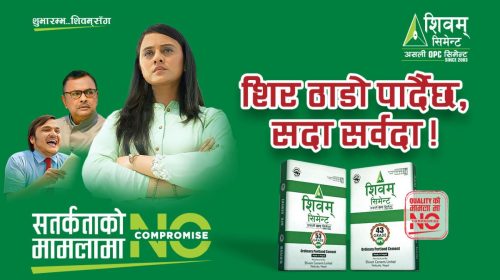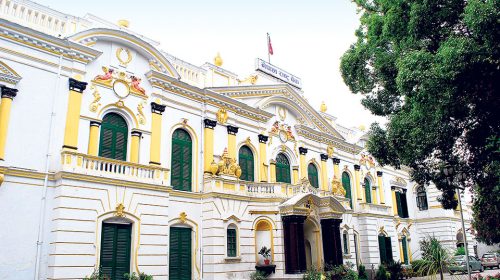How to Make Nepali Special Goat Pakku ? Home Recipe खसीको मासु
Rajendra Tiwari
09 October, KATHMANDU: Dashain Special: When we think or talk about Dashain, we often go back to our childhood days when we used to have lots of fun and expect to get new clothes during Dashain festival. The festival is symbolizes as victory over evils. it is , also known as Bijaya Dashami, one of the longest and most auspicious festival in Nepal. Generally the festival takes place in the month of September to October based on Solar Calendar and lasts for 15 days long .
For me dashain is the time to reunion the family members. Most of the family members spend Their times together even if they are far or near they get special time to visit their family and receive blessings from the elders. During the festival most of the educational institutions and other public offices remain closed and all go for the festive mood. That’s why to feed the large family members and relatives often goat or other animals are sacrificed and prepared delicious dishes out of it. Among all the dishes Pakku ( slow cooked goat meat) is one of the most popular dish prepared during the festival.
Home Recipe खसीको मासु
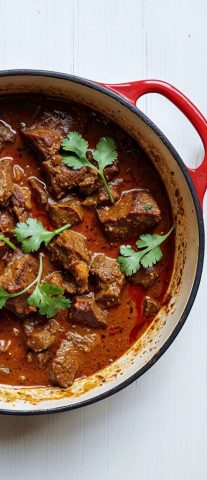
Goat meat curry (Khasi ko Masu) is a must-try for anyone who loves hearty and robust flavours. In Nepal goat meat curry is reserved for special occasions and celebrations, like Dashain, Nepal’s biggest festival. Many Nepali people will have wonderful memories of eating this during festival season with their family and friends. The meat is so tender that it falls right off the bone, and the combination of spices creates a robust flavour that is both comforting and satisfying. So why not give it a try and experience the taste of Nepal in your own kitchen? Your taste buds will thank you!
When preparing the goat meat curry, the bone-in and skin-on meat are preferred over boneless meat as they provide a unique texture, flavour, and nutrition. The bone marrow and fat contribute to the richness of the dish.
In parts of the world where goat meat is not readily available then mutton or lamb can be used as a substitute. Mutton which is is a tougher and fattier meat, similar to goat, it is best slow-cooked, or stewed, to soften it and break down the connective tissue. Whilst lamb has a milder flavour than goat.
How do Nepali people eat Khasi Ko Masu (Goat Meat curry)?
In Nepal the dish is usually served with steamed white rice or aromatic basmati rice. The rice helps to absorb the flavorful sauce and makes for a satisfying meal.
Add a side of vegetables such as green beans, spinach, peas, or cauliflower to the goat curry. The vegetables help to balance out the richness of the curry.
Khasi ko masu is also a favourite curry to add to a traditional Nepali Thali (Food platter).
Tips and Pearls
- Choose the right cut of meat: When making goat curry, it’s important to choose the right cut of meat. Opt for bone-in which provides a huge boost of flavour to the curry.
- Fry the spices: Frying the whole spices and onions in oil or clarified butter until they turn golden brown helps to bring out their flavours and aromas. This is a crucial step in creating a flavourful base for your curry.
- Slow cook for the best results: Slow cooking the goat meat curry is the best way to achieve a tender and flavourful dish.
- Experiment with substitutes: If goat meat is not readily available, lamb or mutton can be used as substitutes.
- Goat meat curry is an excellent choice for meal prepping or creating freezer meals. See below for freezer instructions.
Suggested Alterations
- Use different meat: If goat meat is not available, you can use lamb or mutton instead. Lamb has a milder flavour than goat, while mutton is more robust.
- Add vegetables: Add some vegetables to the curry to make it more nutritious and colorful. Potatoes, carrots, peas, and green beans all work well in goat curry.
- Adjust the spice level: Increase or decrease the amount of chili powder or whole spices to adjust the heat level of the curry. Add more if you like it spicy, or reduce if you prefer a milder flavor.
- Use coconut milk: Add a can of coconut milk to the curry to make it creamier and richer. This is a great option for those who prefer milder and less spicy curries.
- Add nuts: Add some chopped nuts such as almonds or cashews to the curry to add a crunchy texture and nutty flavour.
- Use yogurt or cream: Add a dollop of yogurt or cream to the curry to balance out the spiciness and add a creamy texture.
Freezer Instructions for Goat Meat Curry (Khasi Ko Masu)
- Cool the curry: Allow the goat curry to cool to room temperature before freezing. This will help prevent the growth of bacteria and ensure that the curry freezes evenly.
- Portion out the curry: Divide the curry into portion-sized containers or freezer bags. Make sure to leave enough space for the curry to expand as it freezes.
- Label the containers: Label each container or bag with the date and contents of the curry. This will help you keep track of what you have in the freezer and when it was made.
- Freeze the curry: Place the containers or bags of curry in the freezer and freeze for up to 3 months. Make sure the temperature of your freezer is at or below 0°F (-18°C).
- Thaw the curry: To thaw the goat curry, remove it from the freezer and let it thaw in the refrigerator overnight. Alternatively, you can defrost it in the microwave or on stove top over low heat with a little bit of water added.
- Reheat the curry: Once the curry is thawed, reheat it on the stove over low heat, stirring occasionally until it’s heated through. You can also reheat it in the microwave, but be sure to stir it frequently to prevent uneven heating. Add a splash of water or broth if the curry has become too thick.
- Serve and enjoy: Serve the goat curry hot with steamed rice or bread. Enjoy!
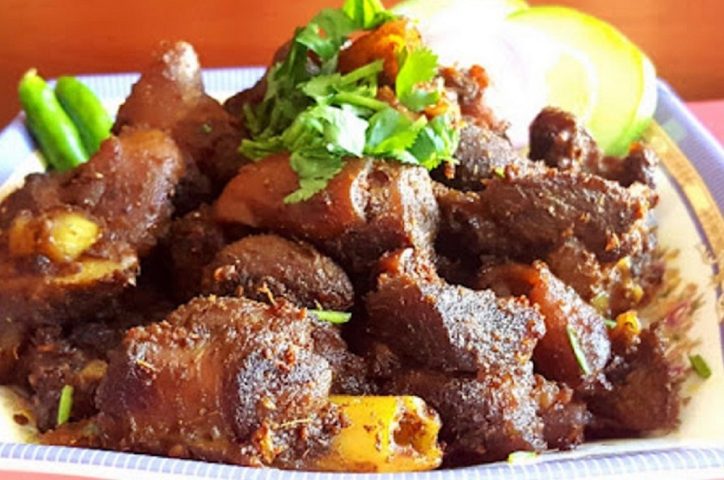
Goat Meat Curry (KHASI KO MASU) खसीको मासु
Goat meat curry (Khasi ko Masu) is a must-try for anyone who loves hearty and robust flavours. In Nepal goat meat curry is reserved for special occasions and celebrations, like Dashain, Nepal’s biggest festival. Many Nepali people will have wonderful memories of eating this during festival season with their family and friends. The meat is so tender that it falls right off the bone, and the combination of spices creates a robust flavour that is both comforting and satisfying. So why not give it a try and experience the taste of Nepal in your own kitchen? Your taste buds will thank you!


